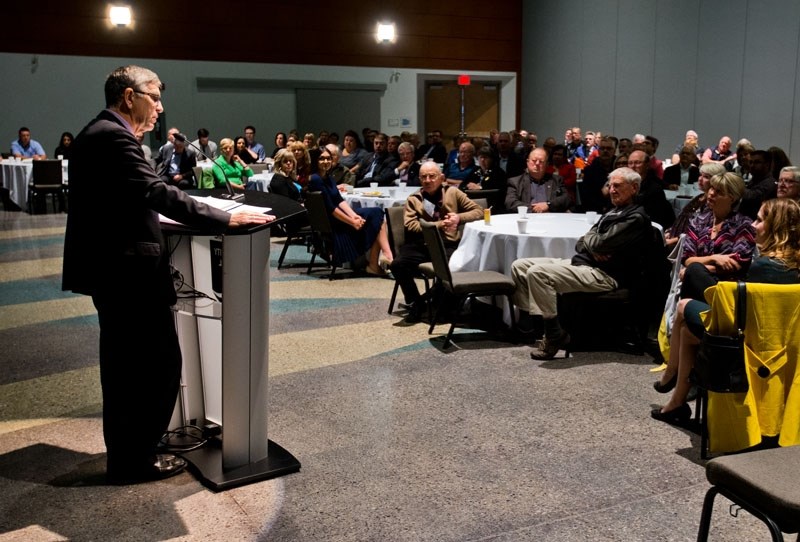St. Albert and Sturgeon County are making progress on several important regional initiatives, according to the two communities' mayors.
St. Albert and Sturgeon County are making progress on several important regional initiatives, according to the two communities' mayors.
About 150 people gathered at the Morinville Community Cultural Centre early Wednesday morning to hear what Sturgeon County Mayor Tom Flynn and St. Albert Mayor Nolan Crouse had to say at the annual State of the Region address.
Flynn said municipal boundaries are only political. Communities do not begin or end at a line on the map, he said.
Both mayors' speeches touched on several areas, summarizing much of the work the two communities have done over the past year. Among the main focuses – both from the mayors and from members of the crowd – were regional growth and transportation.
The two municipalities address these issues through the Inter-municipal Affairs Committee, which meets roughly quarterly and comprises both councils.
Flynn spoke of the significance of planning regional growth, looking for areas of mutual benefit to the two communities, and of the long and sometimes difficult process to find agreement. He said past disputes based on a “lack of understanding and a lack of trust” are being mitigated by hard work by the committee. He emphasized that working together is the best way to move forward.
“We've got to find the best servicing models for both communities – water, storm water and wastewater,” he said. “By working together we can develop a model that will benefit both communities.”
Joint servicing has been an issue of concern to St. Albert city council. Several city councillors have expressed concern about servicing outside the city's borders and effectively allowing the county to compete with the city for industrial development.
Crouse spoke of the push from the province for regional planning, as exemplified by a comprehensive regional growth plan the Capital Region Board is expected to approve later this month. He noted the bilateral work the two communities are doing that has them well poised for long-term growth in the region.
“At this point we don't have any flaws in our model, and we're really proud of that,” he said.
Crouse spoke of much of the development in the county as being a huge benefit to the city as well, including the industrial heartland area that provides jobs for the whole region. It also provides an indirect benefit to St. Albert taxpayers, as more taxes in the county can ultimately mean lower seniors' housing requisition in the city.
Several members of the crowd asked questions and raised concerns about transportation in the region. For example, whether the main commuter route of St. Albert Trail would ever see a reduction in the number of lights.
Crouse noted that wasn't likely to happen, but he said two major planned roadway projects would help alleviate congestion along that corridor.
Within six to 10 years, Crouse said, a new roadway called Fowler Way would connect St. Albert Trail from the Jensen Lakes neighbourhood to Ray Gibbon Drive in the west.
And within a 20-year timeline, 127 Street would extend from north Edmonton around St. Albert's east border, connecting with Highway 2 somewhere south of Highway 37. The alignment of that route has yet to be decided, but Crouse described it as “fundamentally important to the business community and commuters in the region.”
“The long-range plan is evolving, it's just not very fast,” Flynn said of the project.
The next Inter-Municipal Affairs Committee meeting is scheduled for Oct. 26.
